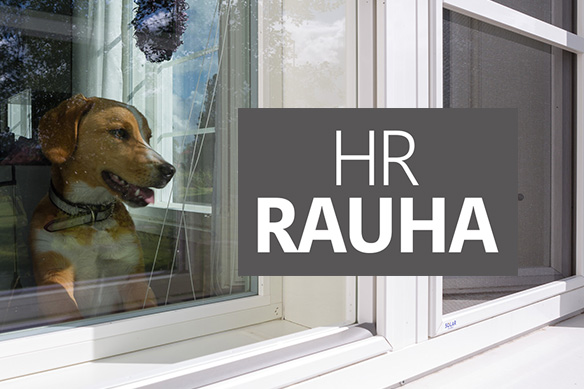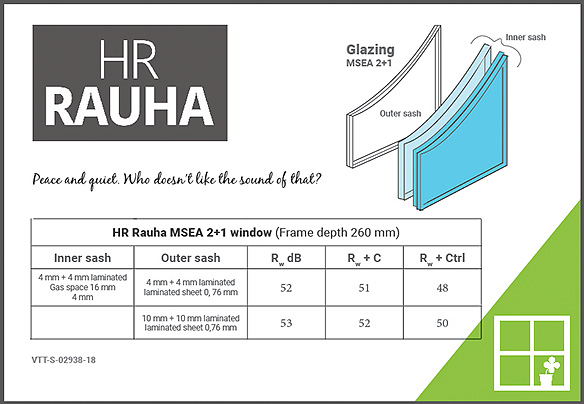
Excellent sound insulation increases comfort within the home
Thanks to HR Rauha sound insulation windows, you can benefit from reduced levels of disruptive noise and excellent sound insulation.
Effective sound insulation is a must for housing close to train tracks or affected by air traffic noise from airports, for example, as well as other areas where comfortable living conditions are a priority.
The structure of HR Rauha windows comprises an MSEA 2+1 glass structure featuring triple glazing and sufficient gas spaces.
The sound insulation of different thickness glass panes improves the larger the distance between the panes. The frame depth of the windows in the HR Rauha range is 260 mm.
The windows in the HR Rauha range have the most efficient means of sound insulation through large gas space and intermediate spaces.
Disruptive noise infiltrates buildings primarily through glass and poorly sealed areas of buildings. Sound insulation is measured on a decibel scale. The threshold of what humans can hear is 0 dB, the base background noise in a home is approximately 30 dB, a quiet conversation is 50 dB and the sound of traffic approximately 70–90 dB. The volume of sound heard by the human ear doubles with every 10 dB increment.

Getting to grips with the terminology
Rw dB describes medium-frequency environmental noise, such as speech, music, radio or TV. Rw + C is used when the sound is medium or high frequency, such as that heard in close proximity to a high-speed motorway, a railway or a jet engine. Rw + Ctr describes low or medium frequency sounds, such as those originating from heavy traffic, propeller planes, disco music, or certain industrial sectors.
Even a small difference in decibels can mean a significant difference in volume; a difference of just three decibels is the equivalent of moving a motorway 50 metres from your house to 100 metres.
Download the brochure here »
Contact us and request a quote! »
